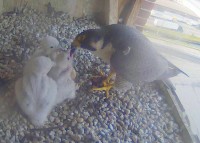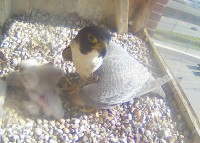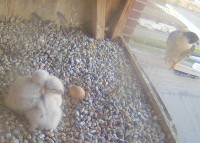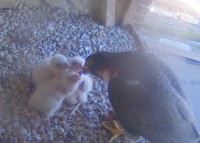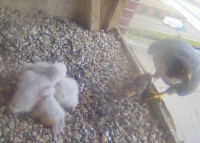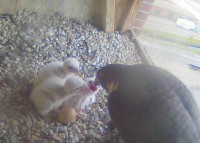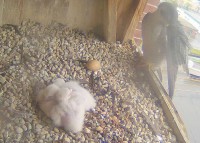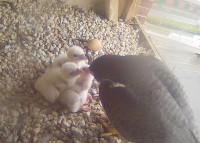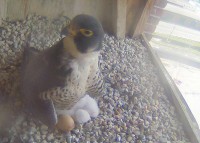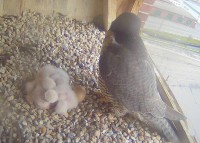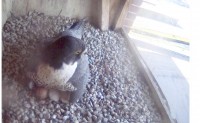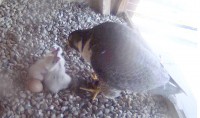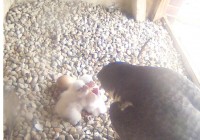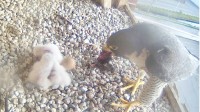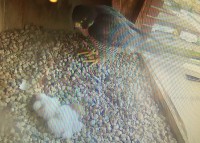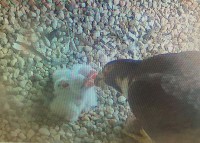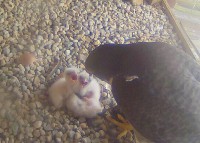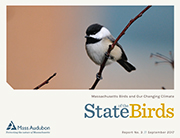Lawrence Peregrines: Day 13!
May 26, 2018 in In the Nest Box, lawrence peregrines, Peregrine Falcons Eastern Massachusetts, Peregrine Falcons Massachusetts
The peregrines started off the morning under fair skies, winds from the SW at 5MPH and the temp at 68F. The day ahead calls for a slight chance of showers and thunderstorms after 3pm. Partly sunny, with a high near 86. Northwest wind 6 to 8 mph. Chance of precipitation is 20%. Tonight, a chance of showers and thunderstorms. Patchy fog between 10pm and 2am.
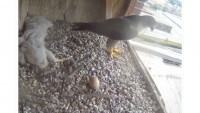 With the high heat, at least the chicks spend most of the day well protected from direct sun, until later in the afternoon. Today, they are mostly snooze hounds, splayed out in the back left corner of the nest box, but, with the vigilant female always nearby. The male arrived to the nest box late morning . He stayed for a short visit, as if looking for the female, and then left.
With the high heat, at least the chicks spend most of the day well protected from direct sun, until later in the afternoon. Today, they are mostly snooze hounds, splayed out in the back left corner of the nest box, but, with the vigilant female always nearby. The male arrived to the nest box late morning . He stayed for a short visit, as if looking for the female, and then left.
As they approach two weeks of age, the chicks are beginning to sit upright more often, but still lean on each other, or against the nest box much of the time. The very beginnings of wing feather development are also seen around this time. In a further look at feeding behavior, the female mostly avoids giving bones, intestines, or too many large feathers to small young. She will usually pick up any dropped fragments of flesh. The arrival, or return, of an adult, with food, is the signal for hungry nestlings to crowd forward and attempt to steal any prey morsels possible!
Literature cited:
Ratcliffe, D. 1993. The Peregrine Falcon. 2nd ed. Carlton, England: T. and A. D. Poyser.
